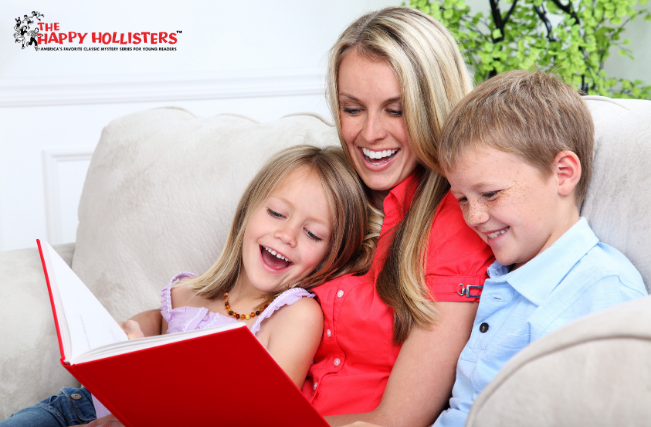“Hygge” isn’t a word in the Happy Hollisters’ unique, vast vocabulary, but with their passion for small-town mysteries and promotion of wholesome values, we bet they’d love the cozy, happy feeling that this Scandinavian concept promotes! As the days get longer and colder, it’s the perfect time to follow the Hollisters’ lead and embrace hygge.
Hygge (approximate pronunciation: hoo-gah) is a concept of Danish origin. It refers to acknowledging the everyday aspects of life that are cozy, charming, and intimate. The word is technically a noun, but hygge is not necessarily a lifestyle or something that people can practice, like a religion or a diet. It is more of a mood or feeling. It’s all about embracing the little moments in life that make you feel comfortable, secure, and just plain good! You don’t “do” or “be” hygge . . . you just feel it.
Hygge is derived from the Danish term for well-being that first popped up in Danish culture in the 1800s. Germans have a similar concept, gemütlichkeit, which conveys a state of friendliness and good cheer, while the Dutch use the term gezelligheid to describe comfortable, relaxed situations. And in Sweden, where Happy Hollister’s author Andrew Svenson’s family hails from, lagom is the term used for hygge-like feelings of moderation and balance. It’s not surprising that these concepts come from European countries known for having long, cold winters. During the winter, embracing hygge is a way for people to keep their spirits up, spread joy to others, and take quiet moments to appreciate all the peaceful things in life.
Since there are no set of rules for getting into the hygge mood, how people enjoy the cozy moments of life is up to them. Hygge is often very small and simple, like lighting a favorite candle on a rainy afternoon or lingering for a bit longer than usual over a morning cup of coffee or tea. In Denmark, some things that are considered particularly hyggeligt, or hygge-like, include:
- Candles
- Soft lighting
- Heavy or heated blankets
- Sweaters, fuzzy socks, and other cozy articles of clothing
- Comfort foods
- Warm drinks, like cider, hot chocolate, or mulled wine (gløgg)
- Meals and gathering with loved ones (though any discussion of politics, family dramas, or other contentious subjects should be avoided!)
Some people even like to create their own hyggekrogs: small, cozy spaces where they can relax and rejuvenate. This might be a comfy chair by a roaring fireplace, a special reading nook, or even a favorite table in a neighborhood coffee shop.
Embracing hygge also means disconnecting from the stress and bustle of everyday life once in a while and putting down the phone to spend time with loved ones. This is another reason why Pete, Pam, Ricky, Holly, Sue and their parents would love hygge. You’ll never catch any of the Hollisters missing out on family time or a great adventure because they’re staring down at a cell phone!
Now that you know a little more about hygge, there’s no excuse this winter. Break out your warmest socks, light a candle or two, and find a relaxing spot to curl up with a cozy mystery. If you’re looking for suggestions on what to read, The Happy Hollisters just might have some ideas!
By Libby Svenson Kennedy
Sources:
Research notes, Andrew Svenson Archives of The Hollister Family Properties Trust
countryliving.com/life/a41187/what-is-hygge-things-to-know-about-the-danish-lifestyle-trend/
https://www.visitdenmark.com/denmark/highlights/hygge/what-hygge

